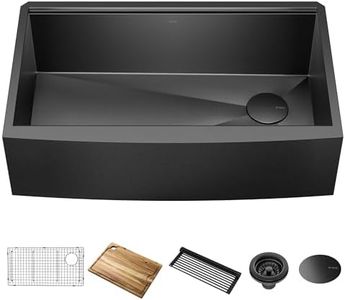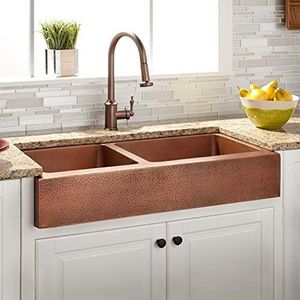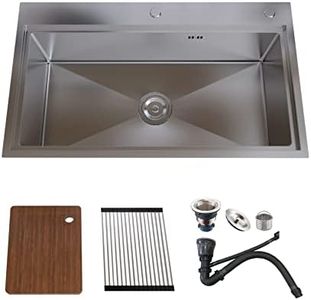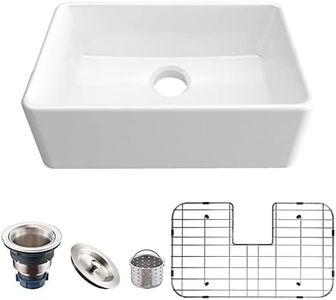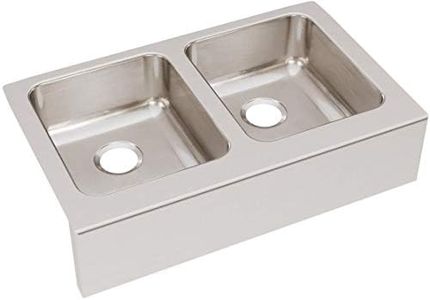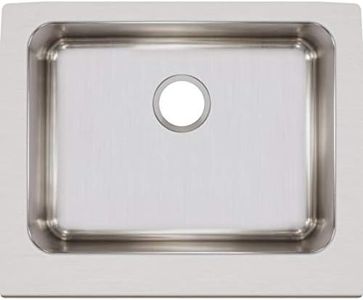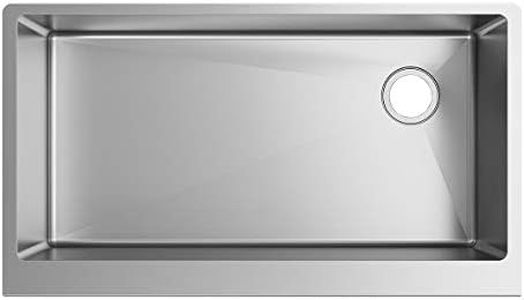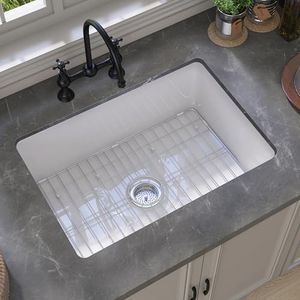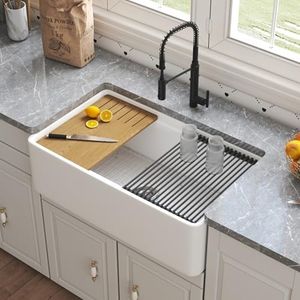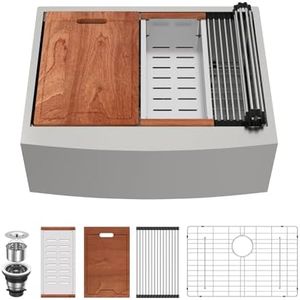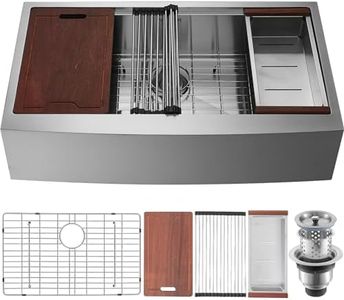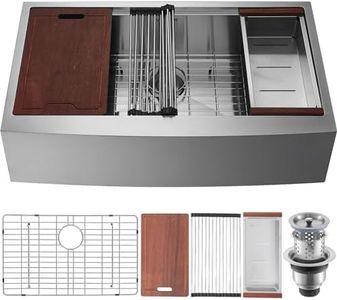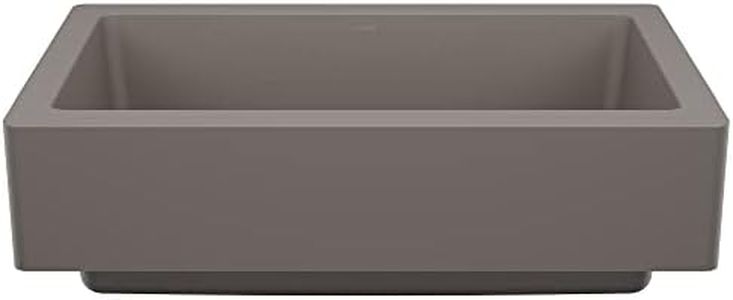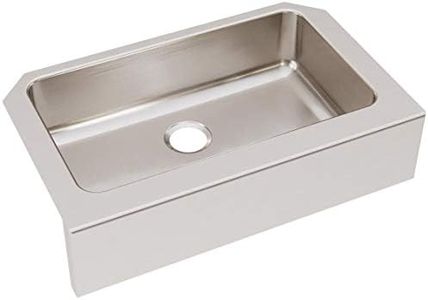We Use CookiesWe use cookies to enhance the security, performance,
functionality and for analytical and promotional activities. By continuing to browse this site you
are agreeing to our privacy policy
10 Best Farmhouse Sink
From leading brands and best sellers available on the web.Buying Guide for the Best Farmhouse Sink
Choosing the right farmhouse sink involves balancing looks, practicality, and the needs of your kitchen. Farmhouse sinks are known for their deep basin and distinctive front apron, making them both a style statement and a functional centerpiece. When deciding which is best for you, take into account the type of use your kitchen sees, the style of your cabinetry, and how much maintenance you’re willing to handle. Consider installation style, materials, size, and accessory options to ensure your sink will fit both your space and your lifestyle needs.MaterialThe material of a farmhouse sink plays a big role in its durability, appearance, and maintenance. Common materials include fireclay, cast iron, stainless steel, copper, and natural stone. Fireclay and cast iron are popular for their traditional look and solid feel, but can be heavy and may require sturdy cabinets. Stainless steel is modern, easy to maintain, and resists staining, while copper brings a warm patina that changes over time. Natural stone is luxurious but may require special care. When choosing material, think about how much use and cleaning will be needed as well as the visual style you prefer in your kitchen.
Basin ConfigurationFarmhouse sinks are available in single basin or double basin designs. A single basin offers plenty of room for large pots and pans, making it ideal for batch cooking or baking enthusiasts. Double basins let you separate tasks like washing and rinsing, which can be more practical for some users. Consider your kitchen habits—if you often leave dishes to soak or need space for multitasking, a double basin may be more helpful, while a single basin is often chosen for its versatility and easier cleaning.
Size and DepthThe size and depth of your farmhouse sink should match your kitchen cabinet size and the amount of work you plan to do in the sink. Typical sizes range from about 24 to 36 inches wide and up to 10 inches deep. Larger and deeper sinks are perfect for big families or frequent entertainers who need to handle lots of dishes, while more compact sizes suit smaller kitchens and lighter workloads. Be sure to measure your existing cabinetry carefully—some farmhouse sinks require special supports or modifications due to their weight and depth.
Apron StyleApron style refers to the exposed front of a farmhouse sink, which is a key element of its visual impact. Some aprons are flat and blend in for a subtle look, while others are curved or patterned for a more decorative effect. Choose the apron style that best complements your kitchen decor and personal taste. If you want your sink to make a statement, go for a detailed or contrasting apron. If you prefer a classic or modern look, a plain apron might be more your style.
Installation TypeFarmhouse sinks mostly require undermount installation, where the sink sits below the countertop. However, some can be installed with a flush or raised mount depending on counter style and preference. Installation type is important for countertop compatibility and water drainage. Check with your installer or supplier to ensure your countertops, especially if made of laminate or less sturdy materials, can handle the unique requirements of farmhouse sink installation. If you’re replacing an existing sink, make sure your new farmhouse sink can be accommodated without major changes to your cabinetry.
Finish and MaintenanceThe finish of your farmhouse sink affects how it looks and how easy it is to keep clean. Glossy or smooth finishes can look elegant and are usually easier to wipe down, while matte or textured finishes may better hide water spots and scratches. Consider how much time you want to spend on upkeep—some materials and finishes need regular gentle cleaning to avoid damage or staining. Choose a finish that fits both your design vision and your willingness to maintain it over time.
